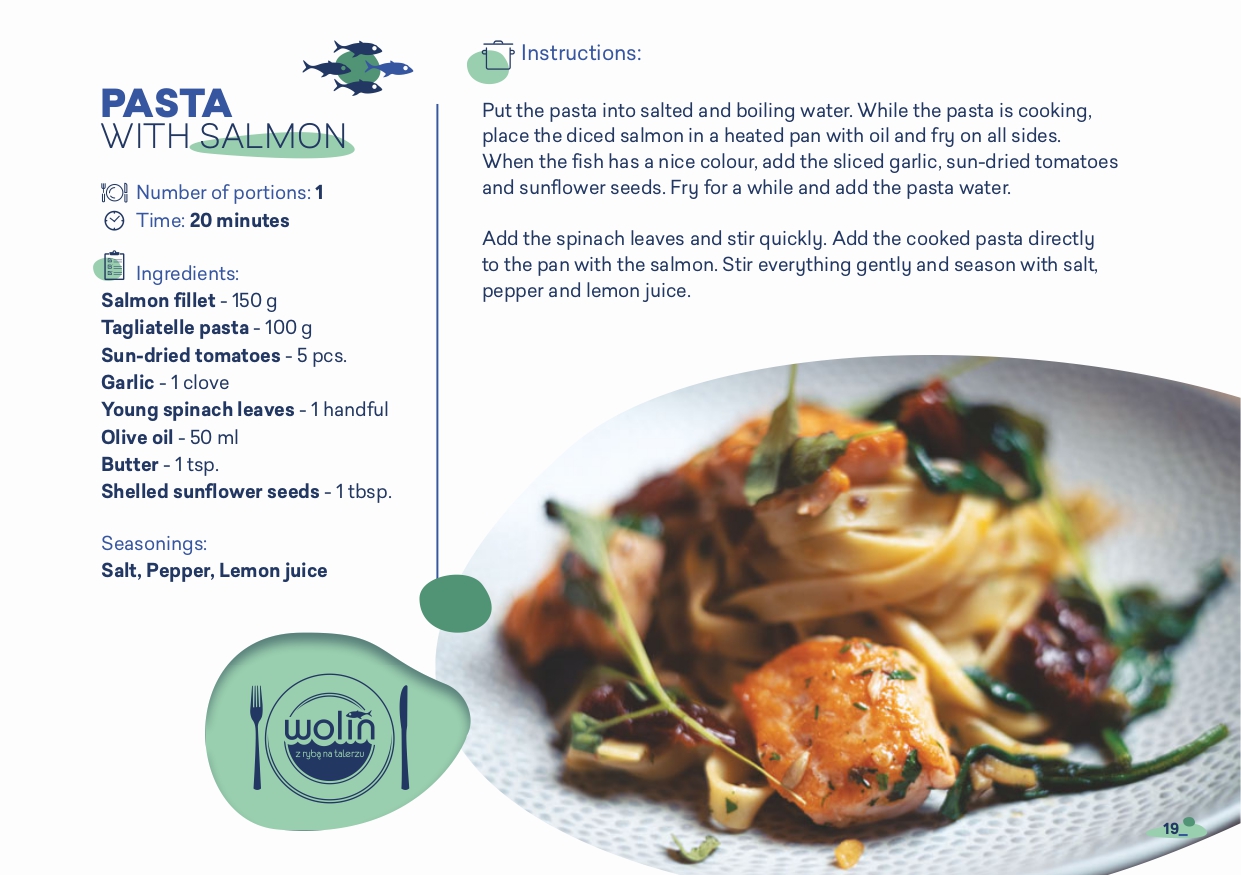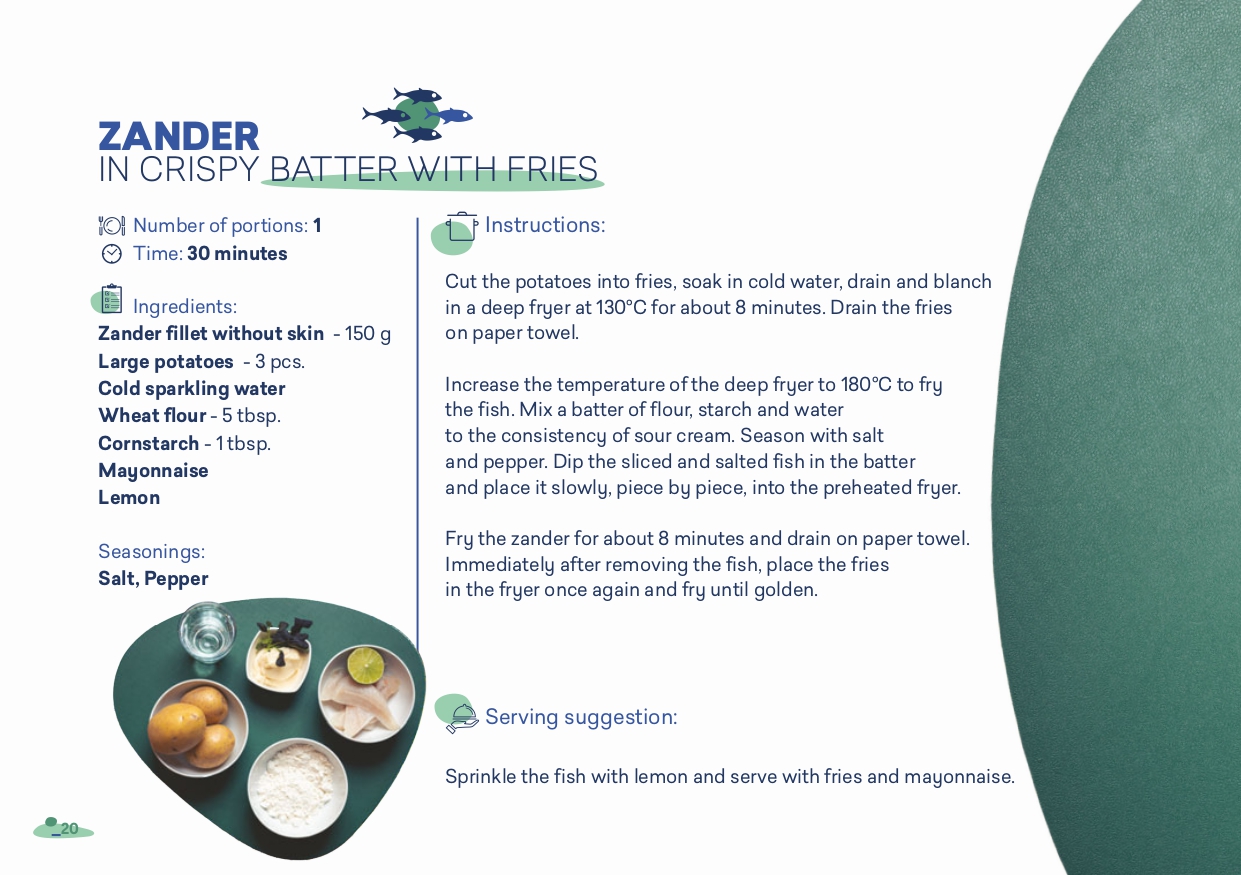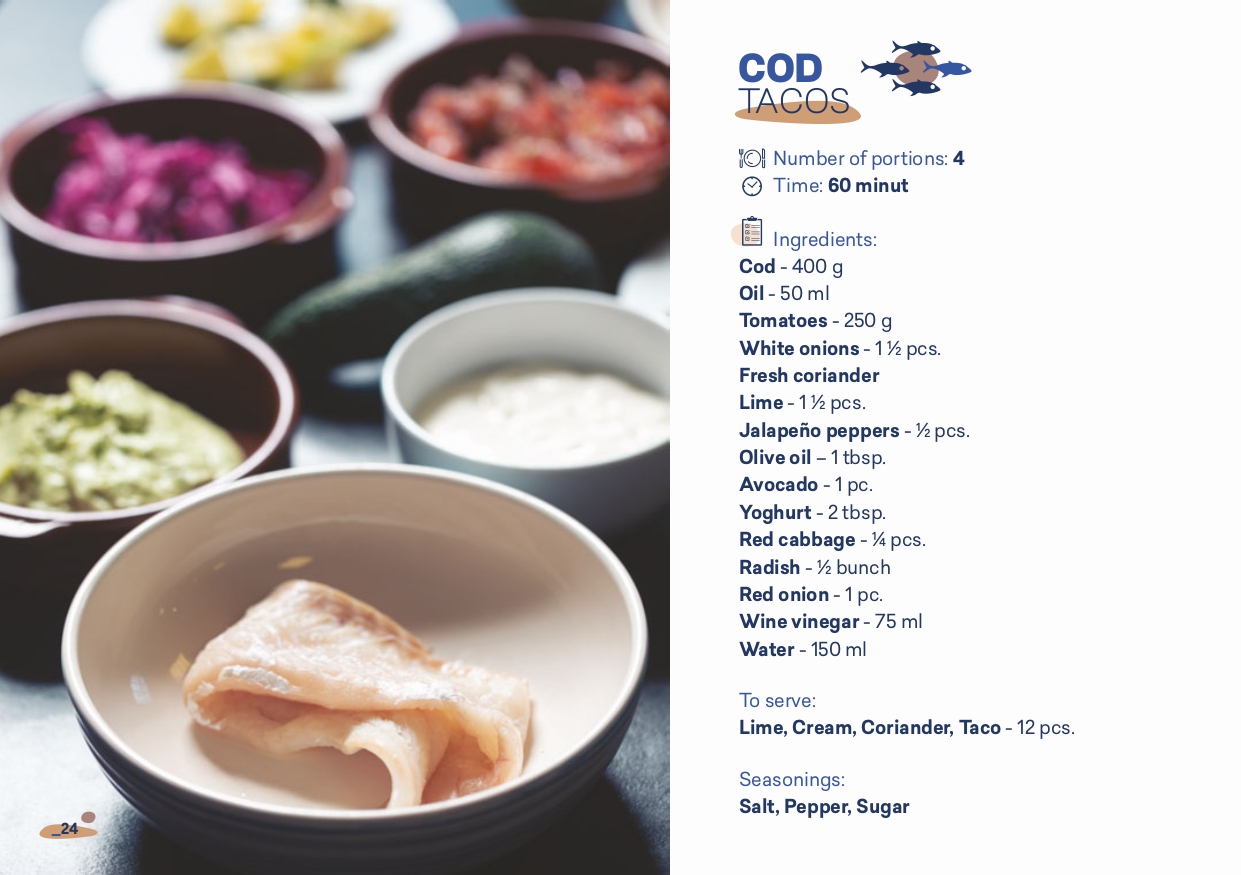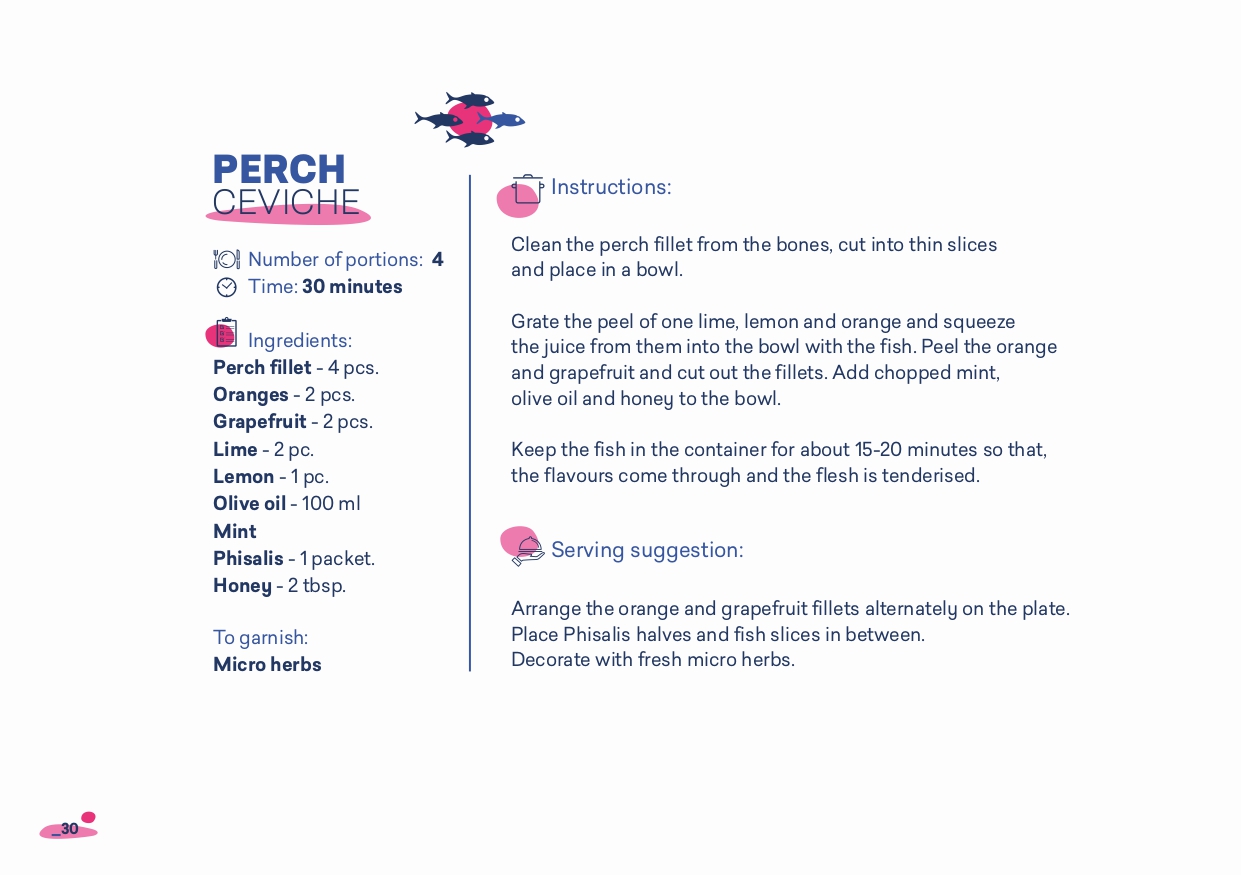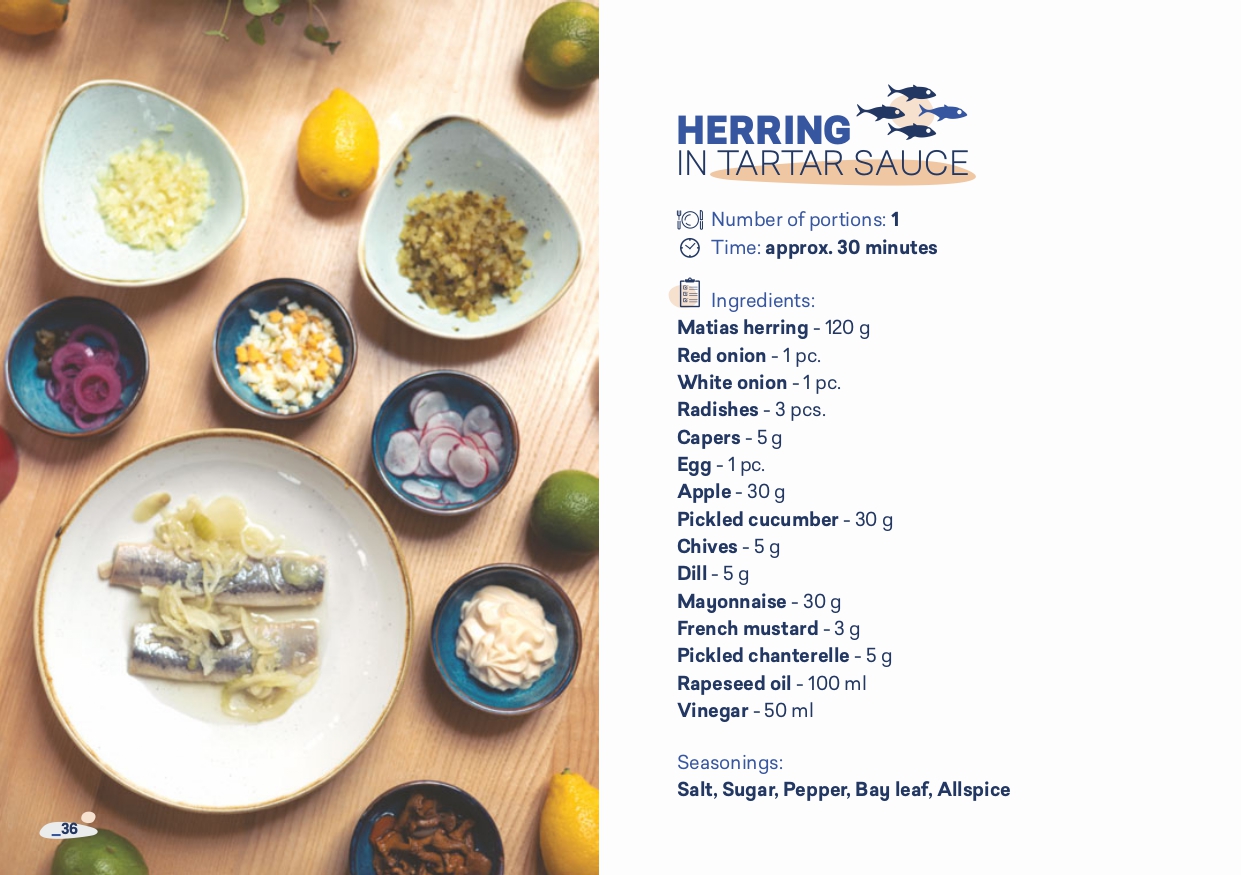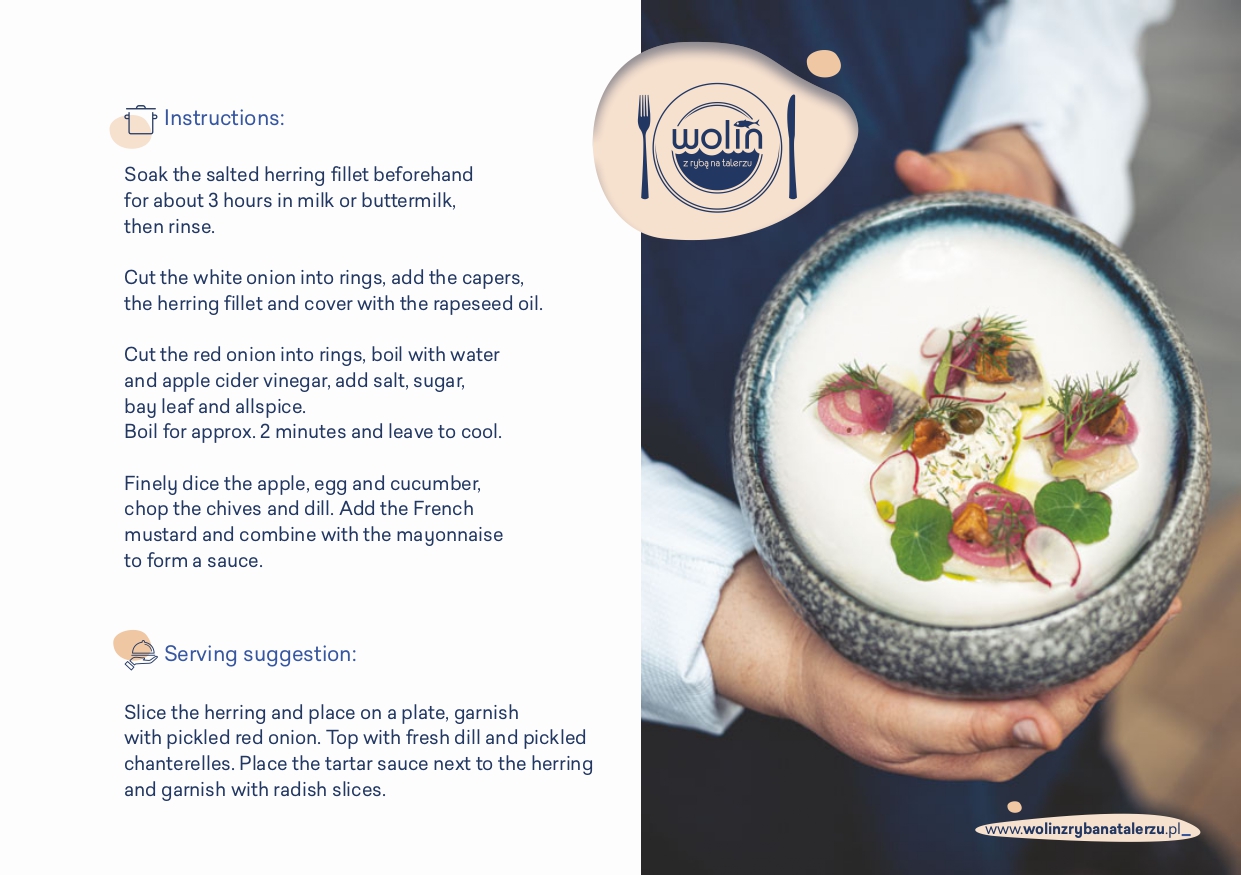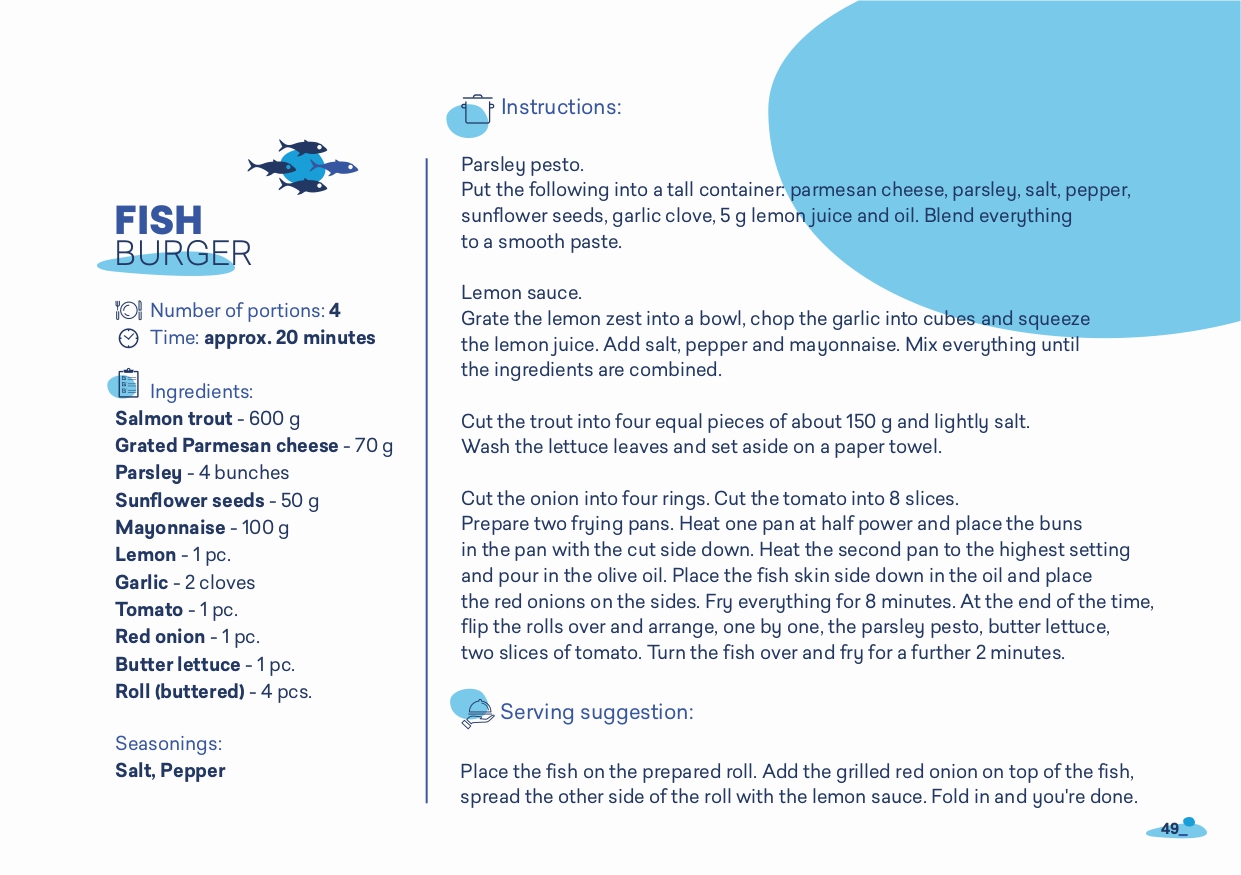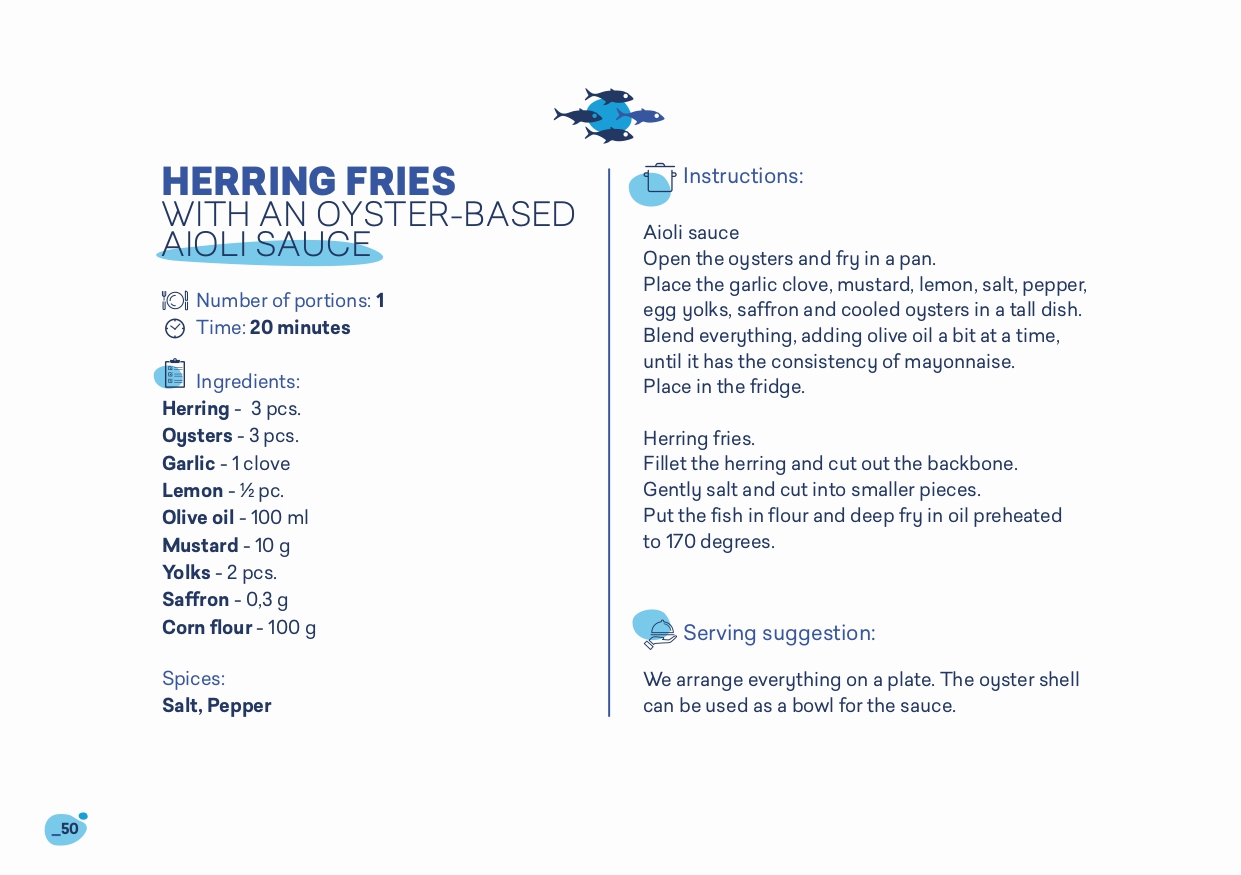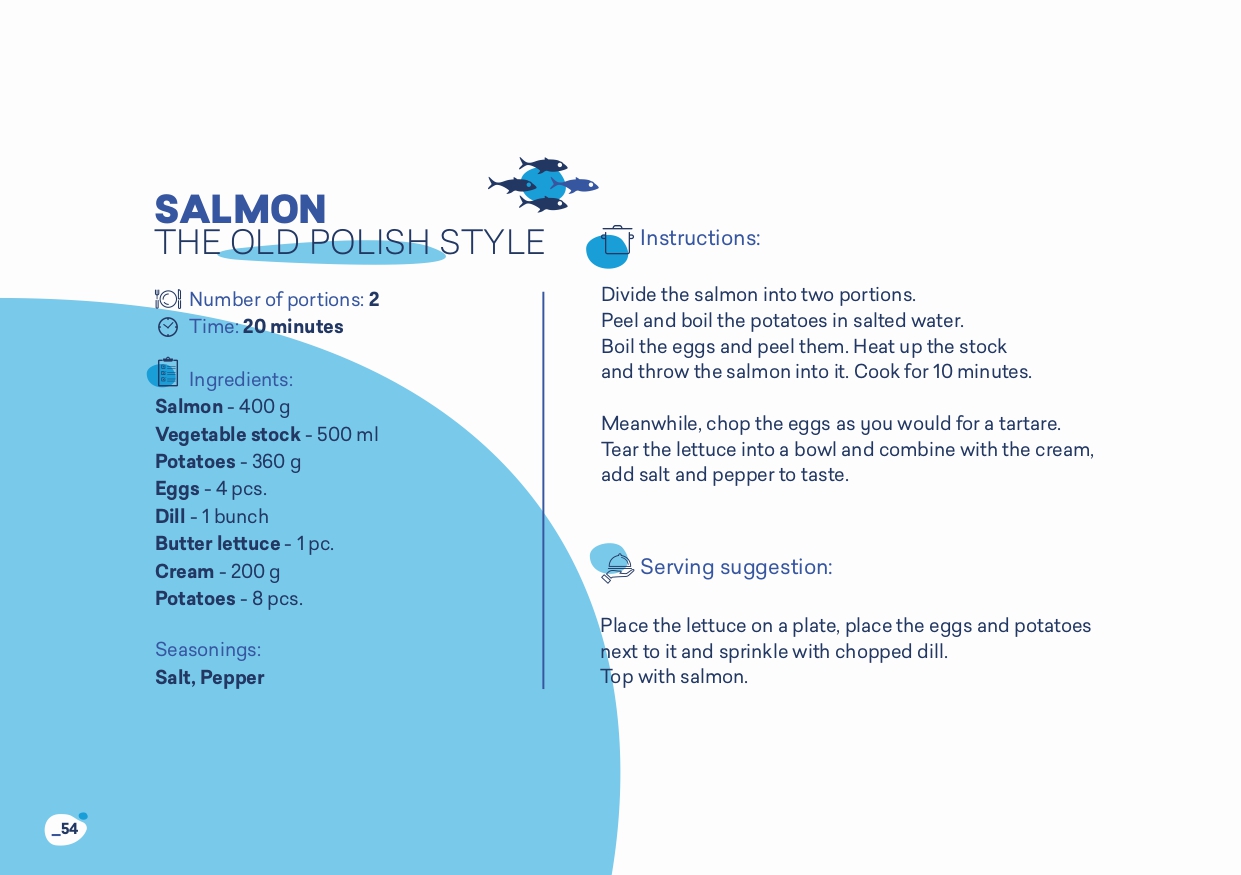Culinary
Fish are an essential component of a balanced diet. They are a light and easily digestible meal, and their protein provides an excellent alternative to animal protein.
Baked, stewed, and steamed fish will contribute to our well-being. Discover our recipes for fish dishes.
WHY SHOULD WE EAT FISH?
Fish are a source of polyunsaturated omega-3 and omega-6 fatty acids.
Healthy fats have a positive impact on brain function, concentration, and memory processes. Omega-3 fatty acids inhibit the development of coronary artery disease and ischemic heart disease, have anti-inflammatory and anticancer properties.
Fish provide complete protein.
Protein is an essential element for the growth and development of the body, production of enzymes, hormones, and antibodies, and serves as an excellent building block for muscles.
Fish are a source of vitamins.
Fish, in particular, contain vitamins A and D, which have beneficial effects on cell growth and regeneration, protect mucous membranes and skin, participate in protein production and fat metabolism, support the visual process, and exhibit strong antioxidant properties.
HOW TO RECOGNISE FRESH FISH?
Odour:
Fresh fish has a natural smell characteristic of the water in which it is found. The smell of the fish should not be unpleasant or repulsive to us.
Gills:
The gills of fresh fish are bright red and, in some cases, even purple. If the gills of the fish are grey or yellowed, with a white coating then the fish is not fresh.
Skin:
Fresh fish have smooth and shiny skin with evenly adhering scales. The skin should also not be covered with mucus.
Meat:
The flesh of fresh fish is characterised by its springiness. It should return to its previous shape when pressed.
Eyes:
The eyes of the fish should be convex and shiny. They must not be cloudy, sunken or hazy.
Chef’s Recipes










